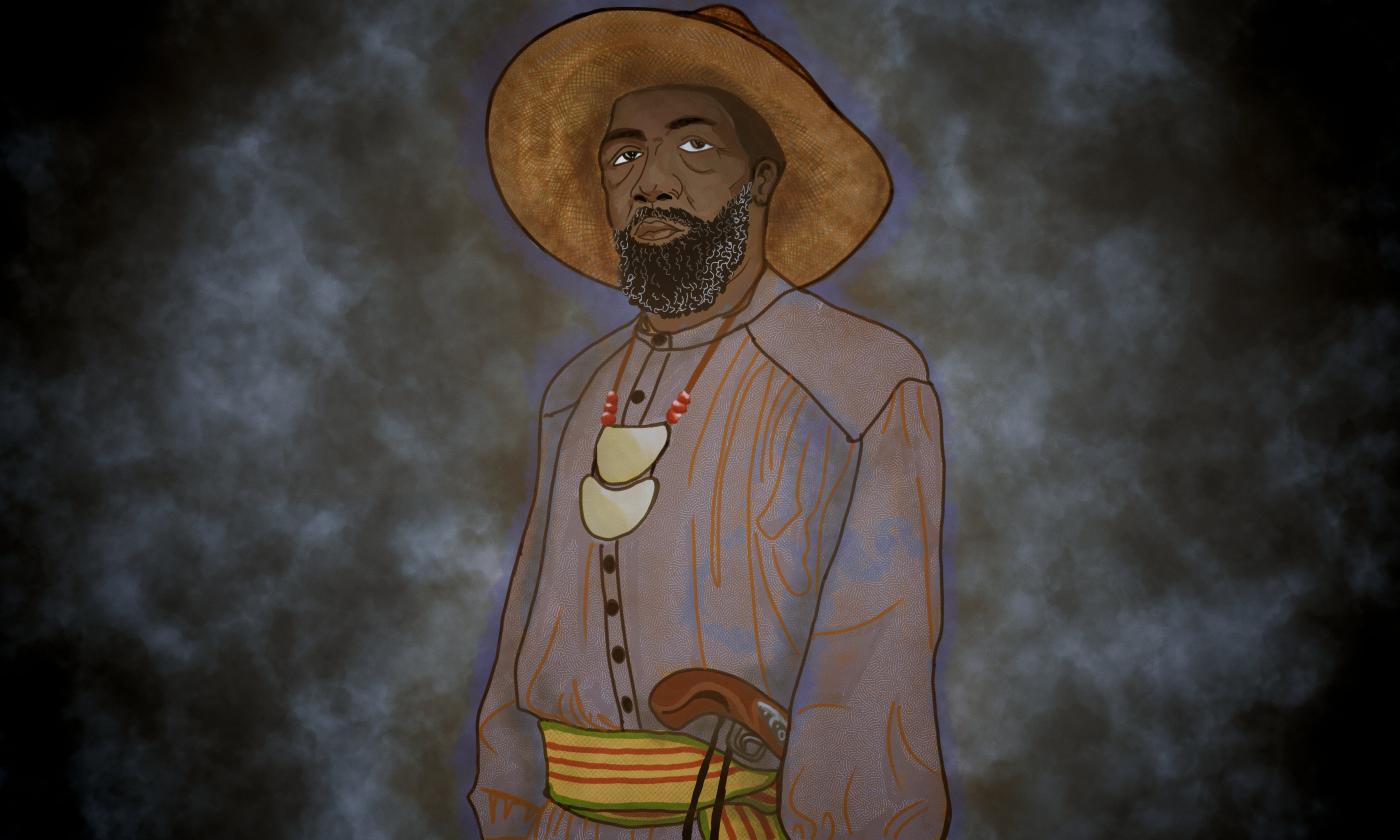
Nero
Leader during the First Seminole War.
Nero
This guest profile was written by Dr. Anthony Dixon in 2024.
Visit The Black Seminole Project's website to learn more about their mission.
Early Life
Little is known about Nero’s early years. What is known is that he commanded his own village as well as the correlated fights with their Seminole Native American counterparts.
The Negro Fort at Prospect Bluff
Though it was more than 200 miles from St. Augustine, this site on the Apalachicola River is relevant to the city's history.
During the Second Spanish Period (1784-1821), this remote site in southwest Florida witnessed a collision of global powers and the development of a maroon community. The British built the fort between 1814 and 1815 and abandoned it soon after. 300 or so Black soldiers remained, trained by the British as allies.
Now called the African Fort or Negro Fort, this settlement was governed by formerly enslaved Africans and between 1814 and 1816. Its destruction on July 17, 1816 marked the start of Florida's First Seminole War.
Learn more about the Negro Fort in the Related Media section.
First Seminole War
The destruction of the Negro Fort was the catalyst for the First Seminole War. After the death of Garcon, Nero rose to prominence and became identified as the leader of the Florida Maroons and Black Seminoles during the First Seminole War. He was able to coordinate the efforts of Blacks throughout Florida.
Nero's Death
It is surmised that Nero was killed in the First Seminole War during the attack on the Alachua by Andrew Jackson. It is after his death we see the rise of the most prominent Black Seminole leader in Florida, Abraham.
Resources
Online Resources
Article about the African Fort at Prospect Bluff, from the Zinn Education Project.
Virtual Exhibit about Maroon Communities of Florida's Gulf Coast, from the New College of Florida.
2002 Fort Gadsden Historic Site Brochure, from the United States Forest Service.
Scholarship for Approaching the Interpretation of Early 19th Century Maroon Gulf Coast Florida, from Tragedy and Survival: Bicentennial of the Southward Movement of Black Seminoles on Florida’s Gulf Coast.
Further Reading
Florida's Negro War: Black Seminoles and the Second Seminole War 1835-1842, by Anthony Dixon, 2014.
The Black Seminoles: History of a Freedom-Seeking People, by Kenneth W. Porter, 1996.
Black Society in Spanish Florida, by Jane Landers, 1999.
The Maroons of Prospect Bluff and Their Quest for Freedom in the Atlantic World, by Nathaniel Millett, 2013.

